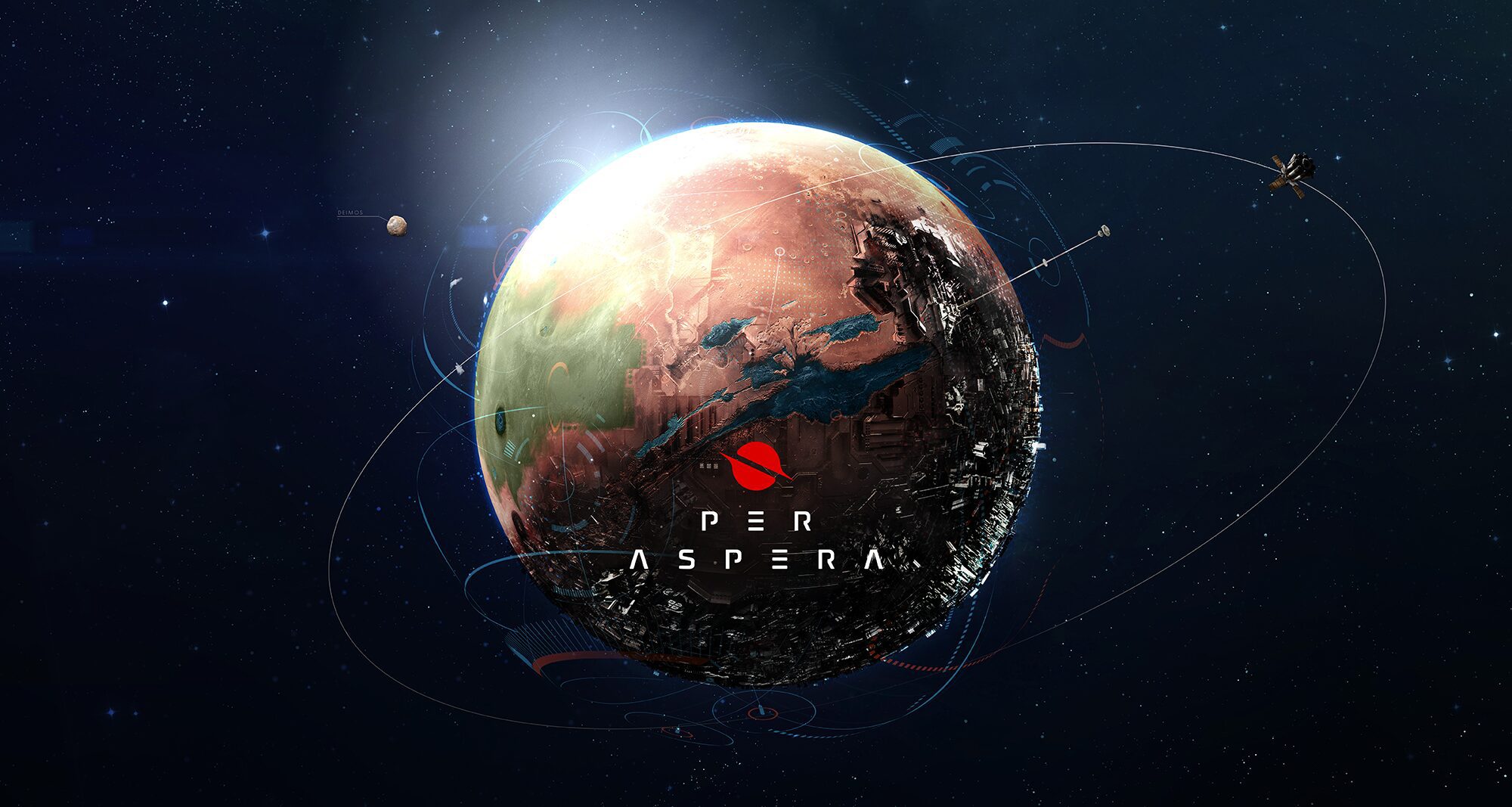Ad astra.
Raw Fury sent us a copy of Tlön Industries’ simulation/strategy game Per Aspera. Which gives players the chance to colonize Mars. Or, you know, die trying. Straight up, your first base is probably going to explode.
Per Aspera’s campaign is meant to be story focused. You play as AMI, an AI sent to prepare Mars for colonization ahead of the colonists. Much of the early game calls between AMI and Dr. Foster, (one of) her creator(s) are concerned with the measure of an AI against organic, sapient intelligence. Are her experiences any different simply because she was manufactured? It progresses in other directions eventually, but I feel that, as one of the game’s draws, it’d be best not to spoil things.
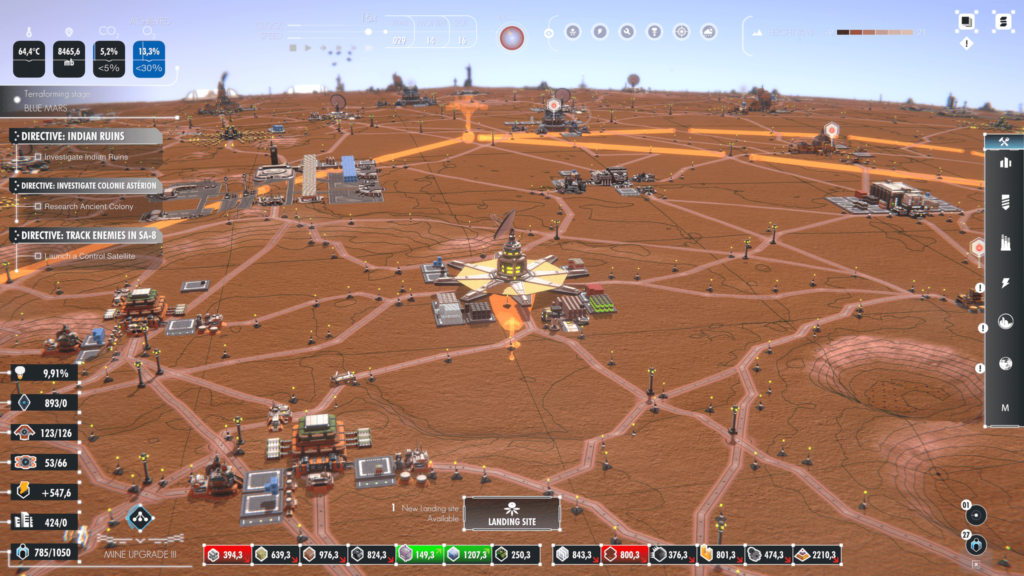
That said, the soundtrack is top notch. There are a few tracks I’ve heard that are nice little bops. Also, much has to be said of the impressive voice cast they put together. Laila Berzins, Troy Baker, Phil LaMarr, and more all put in excellent performances. The game also looks great, at least from what I’ve seen of others’ playthroughs (my PC is a potato, so I had to run it at minimum settings).
Note: for the most part, I’m using images from the press kit because… mine don’t really look all that good.
And this is the point where the gloves come off. Because the meat and potatoes of the game are where the actual problems lay.
To put it bluntly, the game is really not very good at telling you how to play it. What do I mean by that? Well, let’s use the simple, immediate example of worker hubs. The game tells you that worker hubs are the easiest way to extend the overall reach of your base beyond its current perimeter. It also tells you that each hub increases your maximum possible number of active workers.
What it doesn’t tell you is that you can’t just place them anywhere, because worker drones run on a bucket brigade system. That means that they’ll only travel a maximum number of 3 or 4 buildings away from their personal hub. So rather than just using them for expansion, you should be spamming them around every mine, factory, and colony building so that the flow of your materials isn’t held up by a lack of roadways or workers. And even then, worker drones have a nasty habit of not working as intended.
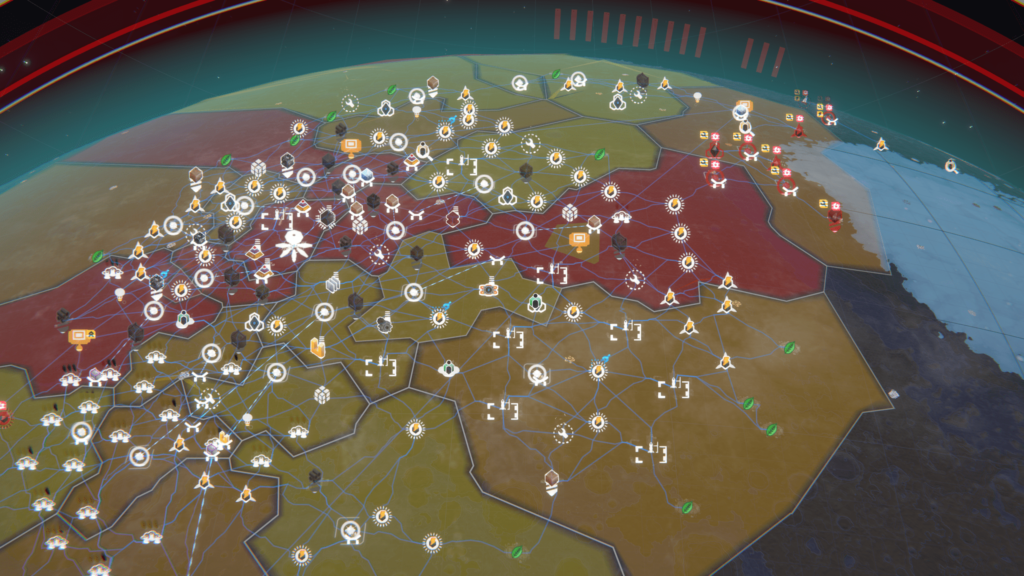
Or, for example, certain factories requesting a resource from a location much farther away from them… when there’s an example of said resource right next to them. There are also, in the campaign, points where the game tells you to do something, when you really shouldn’t. The key example of this is early terraforming. The game suggests that you should star raising the temperature of the atmosphere and reduce the planet’s albedo. the problem being that if you do that, you’re guaranteed not to be able to survive the event that gets triggered by doing so.
What you should do is spend several real life hours building up your maintenance network, resources, tech trees and worker hub network so as to best weather said event. The reason I said this is that my first base died due to it; there was no way for me to course correct, since drones weren’t delivering necessary parts and maintenance bots require a constant stream of electronics and polymers, neither of which were being manufactured at the time. A meteor shower pretty much finished the job. So I started over, spent around 14 real-life hours building up a network to survive that, and then moved on with the story.
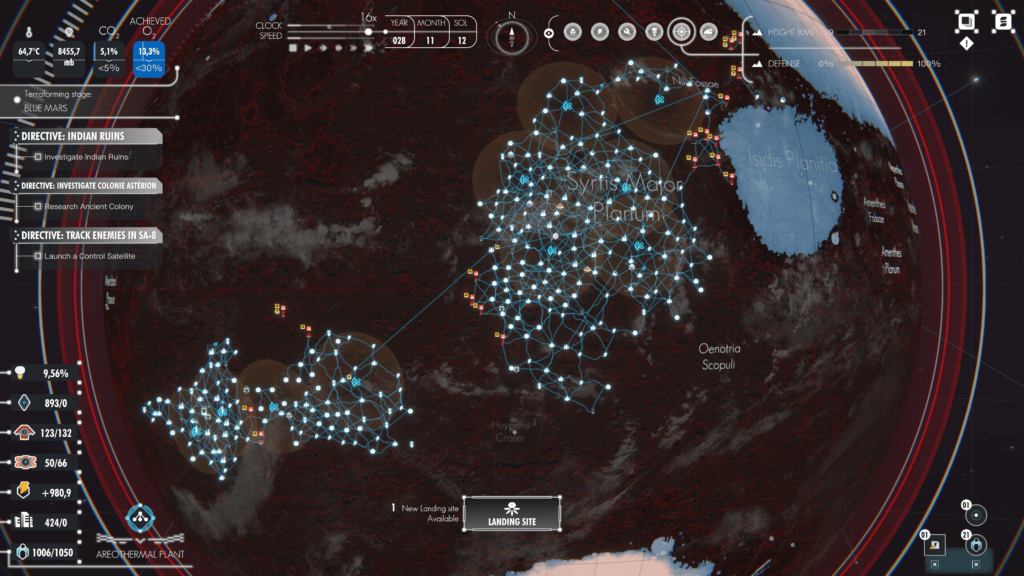
Coincidentally, I started over in Easy, since my original base was on Normal. I honestly noticed no differences; in fact, it was harder because RNGsus smiled on my first base by giving me a pretty decent natural resource spread, whereas number 2 had things far more spread out. Easy is supposed to have more going for it in resources, but I couldn’t really tell, aside from starting with a huge number of chemical nodes, and basically no aluminum for miles (kilometers?). Also previous to the most recent patch as of writing, Easy’s fabrication speed was actually inverted with the Aspera difficulty, meaning I was technically playing the game on a much harder difficulty (at least in part) for almost my entire second run. And that’s not all.
Let’s go back to the game not really explaining how to play it for a bit. There’s a portion of the tech tree dedicated to faster roads, ending in the Hyperloop building, which is actually separate. The game doesn’t tell you how to build these improved roads. Which is a problem, as you’d expect it to either be automatic, or have some project from space view for it. No; you select a building, hit the road improvement icon, and then select the endpoint building. These improved roads, coincidentally, are basically worthless after you get a Hyperloop (which winds up doing a similar thing, but is at least tied to specific buildings) going.
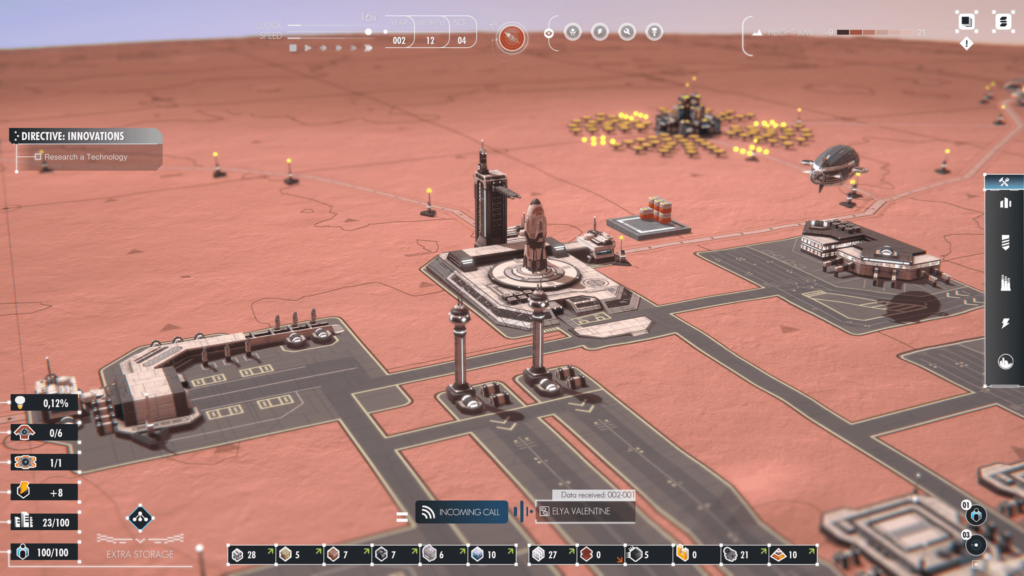
Going back to the tech tree, it’s filled with noob traps, especially in the Biotech tree. The smartest thing you can do is aerobrake a nitrogen comet right after building one (yes, one) GHG Factory, followed by one biodome. Coincidentally, the comet project is somewhere near the end of the Space tree, meaning that you’ll spend several years in-game getting to that point. Not like the rest of the trees are much better, since the nitrogen you want BEFORE you start doing anything with oxygen is usually at the end of any given tree. You ignore this at your own peril; many threads mention how runaway oxygen is causing their bases to burn to the ground with absolutely no fix whatsoever other than restoring to a much older save file.
Wind farms are useless (just like in real life, ZING!), as is a sizeable chunk of the Biotech tree, because the one thing you should not build are those damn oxygen factories. Also, Level 3 Mines are a waste of research points as of this writing; they offer no tangible value for their increased resource cost and power draw other than an extra 50 building HP. Skip ’em. Those resource points are more valuable elsewhere. Namely Fission Plants; there’s no downside to them, and provided you can find at least 1 Uranium node, even batteries are useless by comparison. Get as many colonists on Mars as you can at that moment, and research away.

Raw Fury, Tlön Industries 
Raw Fury, Tlön Industries 
Raw Fury, Tlön Industries 
Raw Fury, Tlön Industries
The other problem is the aforementioned resource distribution. Since I started playing, there have been two patches meant to fix it, and people still jump in only to find that all their raw aluminum after the initial mine is underwater (or rather, soon will be) or so far away from them that they can hardly manage to figure out a way to reach it before their first (story) mine runs out. Coincidentally, the fix to this is an early space project: building a lander for a second landing site. The investment in resources is much lower than the gain you get from simply plopping a new lander down near your base, since it spawns several basic resources (aluminum, water, carbon, iron, silicon and chemicals) around the new lander in ~800+ resource mines. Since the project is repeatable, you want to keep a few on standby when things closer to you run out. It’s sort of a ludicrous break to the game’s theme, but for some its their only option.
Oh, yes, the combat. I’m going to be honest, if you followed my advice above, you’ll breeze through most of the Military tree. I had all of that to about level 4 of the tree before the first attack came from SA-1. Once I’d unlocked the SA-1 sector, I was able to send a stack of 200 assault drones there that wiped the whole enemy base out at 1x speed in a matter of minutes. That is, once I’d searched online as to HOW to select and move drones to a location of my choosing. Because the game doesn’t tell you. It also doesn’t tell you that Drone Hives are a passive defense construct on their own, or that you can split a stack of drones using shift. Granted, moving drones and splitting stacks seemed to still be somewhat finicky for me, but it’s possible to chalk that up to my underpowered PC.
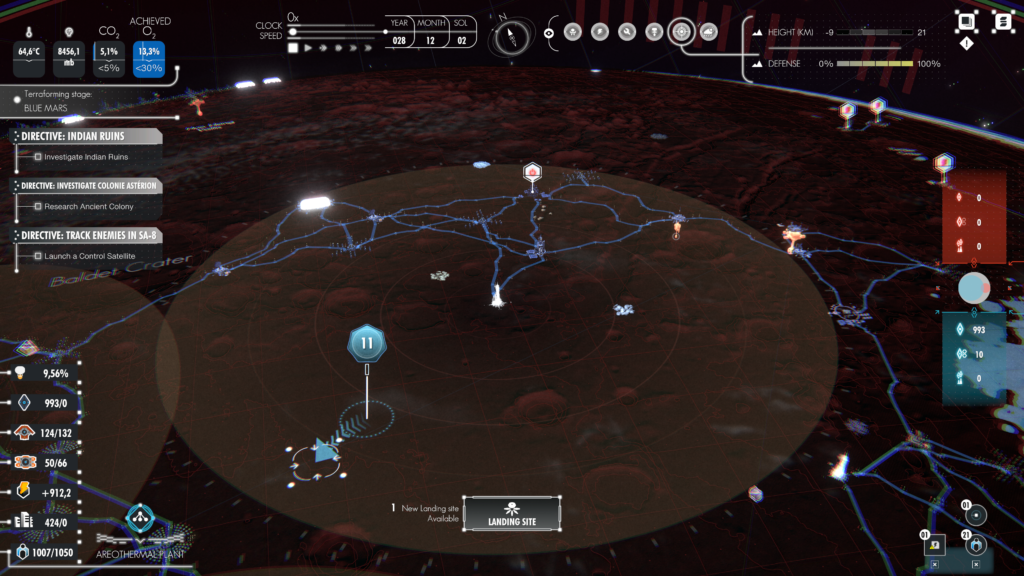
So it might seem that I’m just crapping all over this game. Here’s the thing, though; I enjoyed aspects of it despite not really having any attraction towards the genre. So there’s definitely something there. But I’d argue the game wasn’t ready for launch when it got shuffled out the door for whatever reason.
There are a fair number of problems I haven’t even covered yet, like water for some reason being a stupidly finite resource despite the fact that you can have all your remaining water mining nodes stuck underwater and pretty much every space mission goes to great pains to recycle water to the maximum amount possible (i.e. all of it), or worker drones suddenly getting stuck in random locations for no discernible reason.
That said, to their credit, the devs are taking player complaints like that into account and working towards fixing it all. And that means that this review, itself, is potentially due to be out of date eventually.

So do I recommend Per Aspera? As things currently stand, no. I spent a little over 25 hours getting progressively more frustrated with parts of this game, frequently tabbing out to search threads to figure out what the hell was going wrong in my game, or how to do something the game doesn’t properly explain, if it does at all. That said, it’s entirely possible that a few months from now, this will no longer be the case. So I’m left with little alternative than to leave this at the reader’s discretion.
Pros:
+ Excellent voicework
+ High presentation values
+ Concept that draws you in
+ Good soundtrack
+Devs are listening to feedback
Cons:
– Lack of tutorials
– Numerous bugs
– Resources often don’t spawn as necessary
– The upgrade paths are full of traps
Final Score
*A review copy was provided by the publisher*

